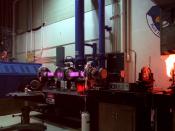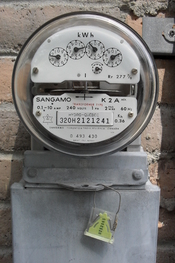Energy conservation is something we all hear about on a regular basis. Why should we as consumers bother to worry about energy conservation? The answer is quite simple. We are using fossil fuels to provide our energy that we mostly take for granted. This is a resource that will eventually run out. The human race is growing at a rapid rate and the impact on the global energy requirements is massive. For every Kilowatt-hour saved, 1.2kg less greenhouse gasses are produced. (Environmental Services Branch, 1993). Another good reason to cut back on our use is the financial incentive. Savings made from smart use can be quite substantial.
In this essay we are going to look at home energy use, in particular home lighting. After the hot water system, home lighting can account for as much as 55% of your energy bill. In order to understand your electricity we need to understand how it is measured.
The energy consumption of an appliance can be obtained from its nameplate or in the case of lighting, on the globe or tube itself. It identifies the energy rating in watts (W) or kilowatts (kW). What is a watt? Encyclopaedia Britannica describes a watt as: 'unit of power in the International System of Units (SI) equal to one joule of work performed per second, or to 1/746 horsepower. An equivalent is the power dissipated in an electrical conductor carrying one ampere current between points at one-volt potential difference. It is named in honour of James Watt, British engineer and inventor. One thousand watts equal one kilowatt. Most electrical devices are rated in watts'. (Encyclopaedia Britannica, 2003).
What is a kilowatt hour (kWh) or as it is referred on your electricity account, a 'unit' of electricity? Basically it is the amount of electricity...


